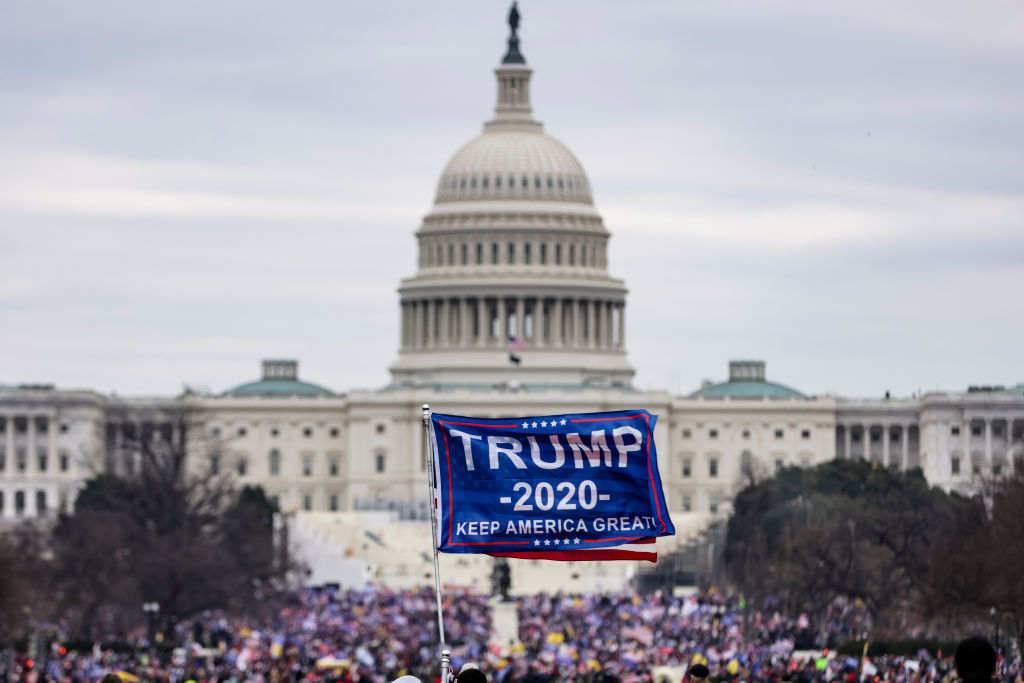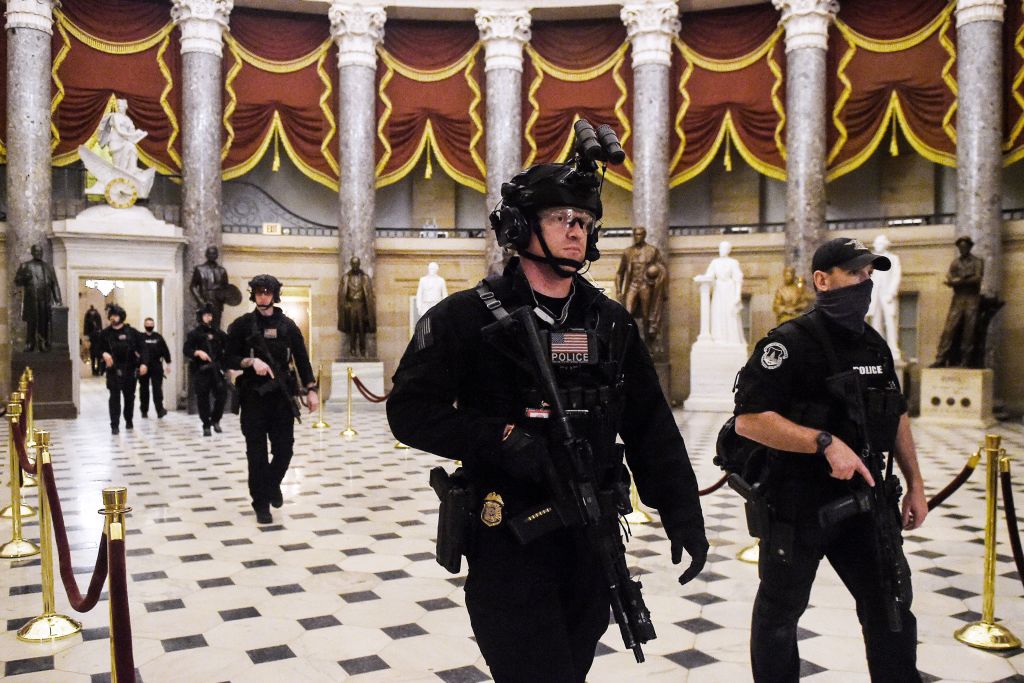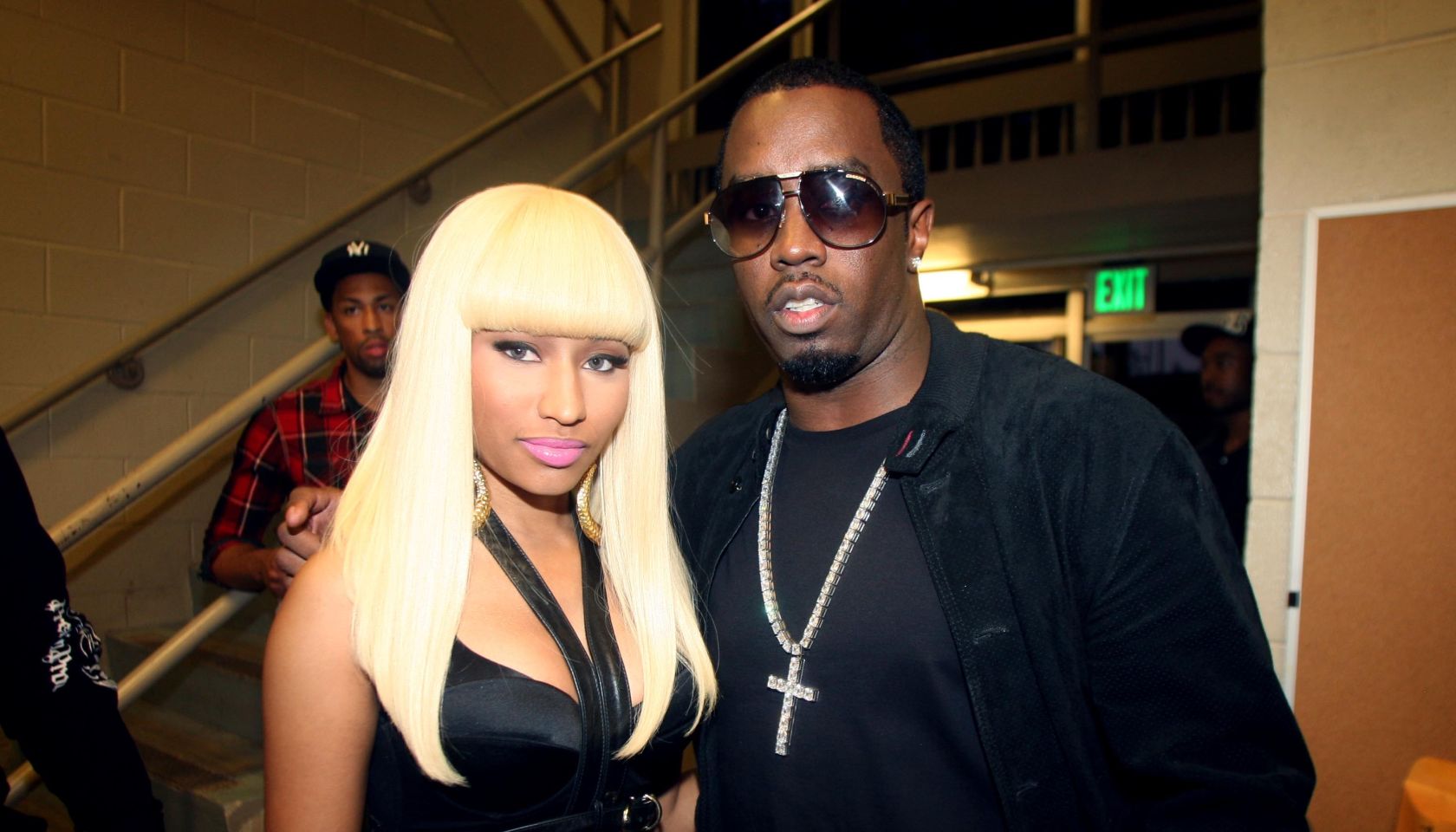Donald Trump And The January 6 Counterinsurgency
Op-Ed: Donald Trump And The January 6 Counterinsurgency

Source: Samuel Corum / Getty
“You will not replace us! You will not replace us! You will not replace us!” engulfed the statue of the author of American Democracy—Thomas Jefferson. On that fateful night, white supremacists of all stripes marched past St. Paul Memorial Church, where more than 600 religious folks and organizers gathered to pray, preach, and praise as we prepared to confront those who marched with bloodlust in their eyes on Aug. 12, 2017.
“You will not replace us!” is a desperate prayer made by the insecure who believe that others desire their demise. Their plea to Nordic gods can be heard in school boards, city councils and right-wing media. From Charlottesville to the Capitol and little hamlets in between, the fear—unfounded as it may be— climbed the walls of the United States Capitol on Jan. 6, 2021.
It is popular to talk about the attack on the Capitol as an abrasion, an anomaly; something that lies outside the bonds of American democracy. To be sure, it was an attack on institutional democracy. It signaled the death of American innocence. The fingers pointed by American partisans toward the Global South elections are now pointing back at Washington, D.C. What only is supposed to happen “over there” happened “over here.”
The “Big Lie” about the big “Steal” was not the beginning. It goes without saying that racism has long plagued the United States. Even, conservatives acknowledge this to be the case. They, of course, relegate racism to the past. Nevertheless, racism has long cast a shadow over the Capitol—finding appeal, depending upon the disposition of the Congress and White House at even given time. In the mid-1800s, Abraham Lincoln was a certain kind of Republican who launched the war that ended slavery while the Dixiecrats—Democrats in the South—preferred segregation during the 20th-century civil rights movement.
To this end, our framing of Jan. 6 is wrong. The logic goes if we capture and punish the “rioters” and perhaps the Congressional enablers then all will be well. The problem with this approach is that it is a lie. A lie cannot cast out a lie. A lie plus a lie does not equal the truth. Neither the Capitol rioters nor those who seek to punish them are telling the truth. What is at stake is not who won an election and who did not but rather the national character. The battle is not only over the Constitution but also our constitution.
January 6, the event, was not an insurrection; it was and is a counterinsurgency. Insurrections are rebellions against governments that deny the humanity of these victims. These often failed attempts at becoming free. They seek to recast the possibility of being. Counterinsurgencies attempt to reimpose the very system that the insurrectionists opposed. The attack on the Capitol is a symptom, not the problem. Since the 2008 election of President Barack Obama, there is a vocal group of white folks—of every class—who believe that Black folks, women and queer folks are threatening a collective sense of self; a battle for the soul of the beleaguered democracy.
The 2016 election of Donald Trump was a counterinsurgency against the Obama presidency and the burgeoning Black Lives Matter movement, embodied in the Ferguson rebellion. Subsequent police killings spurred protests and property destruction in major U.S. cities. “Hands Up! Don’t Shoot” was a clarion call against state violence the world over. One may recall that Trump in his campaign speeches encouraged his supporters to do violence against protestors. The Women’s March—a reaction to the election of Trump—poured millions into the streets, globally. Leaders against state violence and gender justice were coming together—so it seemed—to form a coalition of the conscious. Every sector of society was mobilized—an insurrection was afoot. At the same time, a series of counterinsurgent laws and executive acts—the Muslim ban, caging undocumented children and a slew of anti-queer measures at the local level—combined with an exponential increase in hate crimes constituted a reassertion of what it means to be American, who belongs and who does not.
Ultimately, the angry, mostly young men carrying tiki torches through the Charlottesville streets were not marching to protect Robert E. Lee’s statue. They were marching to express their dominance against the insurgent movement of racial justice, women’s rights, immigration justice and queer solidarity. They, too, are a part of a coalition made up of legislators, media personalities, police associations, religious leaders and angsty young folks who feel their birthright is under attack. Their allies in the Oval Office affirmed and egged on their violent counterprotest. The summer of 2020 George Floyd uprisings and the current popular conversations about racism only confirm their belief that there are too many gains by the historically othered in the United States. Six months later, the January 6 Riots were a reaction to an insurrection; a counterinsurgency to overturn the election of the president with the main aim of destroying the insurgency.
Now, if we are honest, there is a waning interest in actual structural reform; most of the developments toward a just society have been symbolic. The cry “Defund the Police” has been met with increased funding for police departments. Black Lives Matter murals are painted on streets around the country, yet police killings have not decreased. States throughout the Union have hampered a woman’s right to choose. Roe v. Wade is teetering on extinction. Untold numbers of undocumented folks languish in cages under a Democratic presidency. Yet, the perception of progress is a threat, warranting counterinsurgency on several fronts—school boards, municipal governments, state legislatures, in the streets, and at the federal level.
So then, the last cultural war constitutes a continuing counterinsurgency that was made visible on Jan. 6. The plot to kidnap and kill the Michigan governor is just one example of how political violence may become commonplace in the United States. It has been reported that a disproportionate amount of those who besieged the Capitol came from places where the white population has decreased in recent years. The twice impeached and twice indicted Donald Trump has a whopping 70% support among Republican voters in recent polls. The former president’s closest competition —Florida Gov. Ron DeSantis—has elevated his assault on post-1960s advancements. He is out-Trumping Trump by passing a number of counterinsurgency laws that reify the draconian spirit embodied at the Capitol.
“You will not replace us!” is the rallying cry for the most violent elements on the right and their collaborators. Their existential supplication has deadly implications. While it is true that U.S. democracy has never fulfilled its promises to Black folks, the counterinsurgents (Neo Nazis, white Christian Nationalists and plain old racists) hold deep disdain for voting rights, trans folks, immigrants, protests, drag shows, women’s bodily autonomy, environmental protections, Black history and seemingly any version of the United States before the great 1960s revolutions. The solidarity of the counterinsurgency requires all who suffer to be in solidarity if we are to retrain some fragment of the democracy.
The United States knows better than most of the world that counterinsurgencies cannot be voted out; they do not go quietly into the night.
Noted organizer, musician, and theologian, Rev. Osagyefo Sekou is a pastor of Valley and Mountain Fellowship United Methodist Church in Seattle, Washington. Rev. Sekou is a Religious Studies Phd candidate at Goldsmiths, University of London.
SEE ALSO:
Slave Uprisings Were Legitimate Insurrections, Unlike Jan. 6 Capitol Riots
















